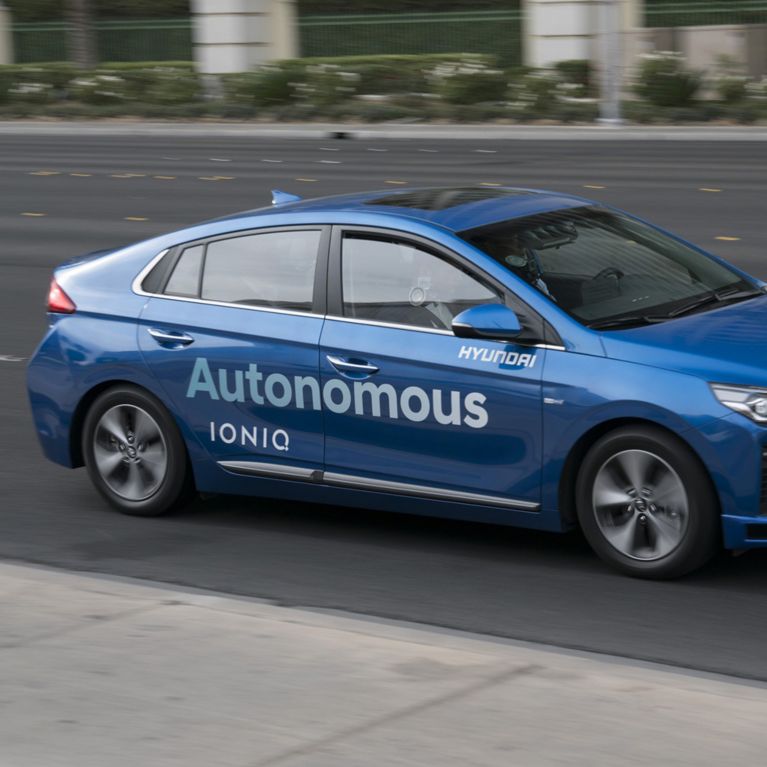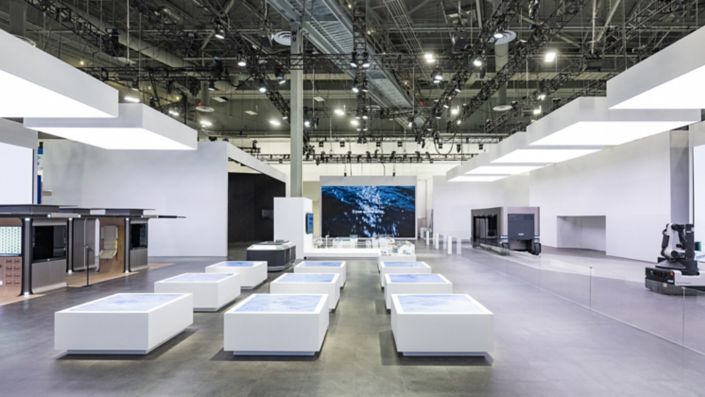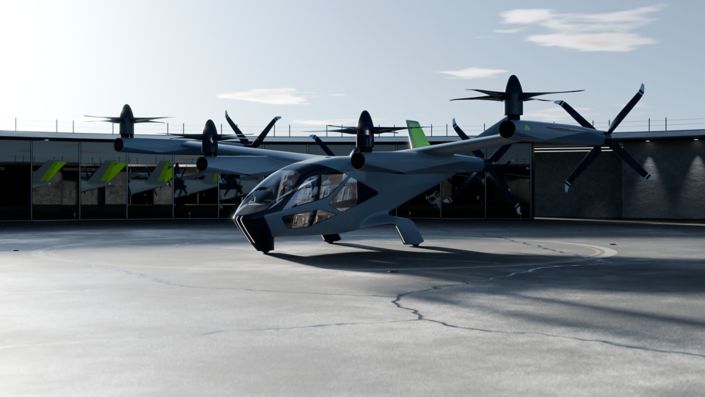They're a vision of the future: autonomous cars moving without drivers but the pursuit of this fantastical dream dates from at least the 1920s, a time when cars looked like carriages without horses.
Driverless trains and trams are common in many cities’ transport networks while modern jumbo jets practically fly themselves, but putting autonomous cars on streets and motorways has always been a trickier exercise. With a self-driving Hyundai IONIQ the latest to be showcased in test drives, we are getting ever closer to the day when these vehicles will be a common sight on our roads.
Car manufacturers and other technology companies have significantly ramped up their efforts in this field in recent years with ongoing or planned testing on urban routes in countries like the UK, Germany, Sweden, and France but the development of autonomous vehicles goes back much further, to the early 20th Century.
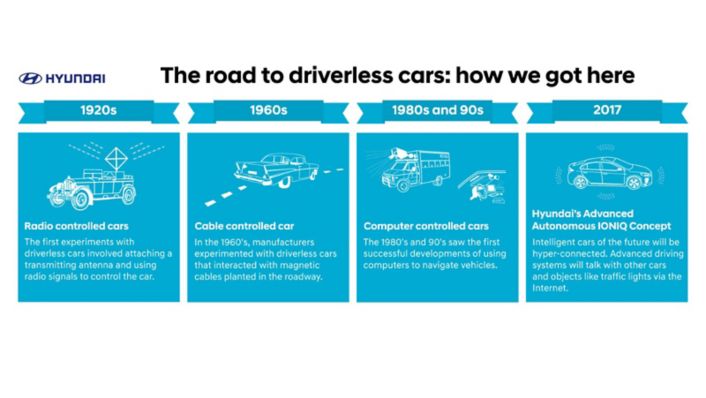
Radio-controlled cars
The first experiments mainly involved radio-controlled cars. In 1925, Houdina Radio Control showcased the "Linrrican Wonder," a 1926 Chandler with a transmitting antenna, in New York City. Operated by a second car travelling behind, the driverless vehicle was able to negotiate through traffic on Broadway and Fifth Avenue.
A decade later, a vision of the City of the Future was displayed at the Futurama exhibit at the 1939 World’s Fair in New York. Radio-controlled cars were propelled by electromagnetic fields which were generated by circuits embedded in the roadways themselves.
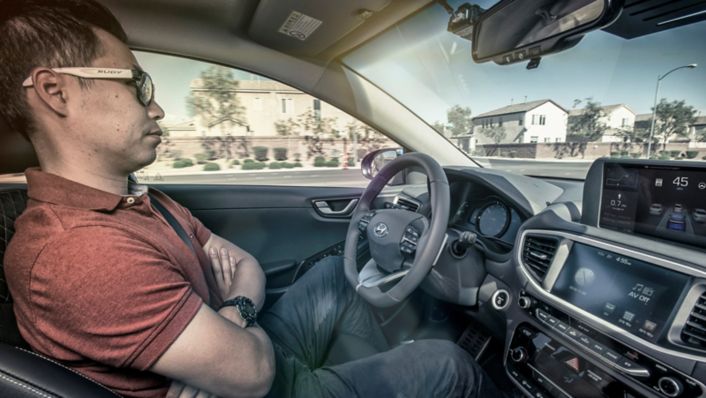
Most of the challenges facing driverless car technology have remained constant. Either the technology is inserted in the cars themselves to respond to the many distracting variables on city streets such as pedestrians, cyclists, and driver behaviour, or the roads are adapted to do the thinking for the vehicles as was seen in much of the early trials.
In the 1950s, RCA Labs in Nebraska experimented with a full-size system of wires laid on a 400 ft long stretch of public motorway. Circuits would detect the presence and speed of vehicles on the tracks and send impulses to guide the car on the surface.
In the 1950s, RCA Labs in Nebraska experimented with a full-size system of wires laid on a 400 ft long stretch of public motorway. Circuits would detect the presence and speed of vehicles on the tracks and send impulses to guide the car on the surface.
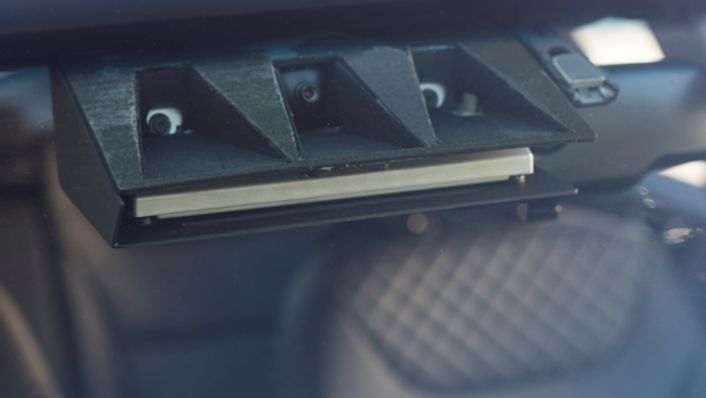
Mass-commercialisation of autonomous cars
During the 1960s, the same decade that James Bond and his gadget-filled vehicles first appeared on cinema screens, the United Kingdom's Transport and Road Research Laboratory tested a driverless car that interacted with magnetic cables that were planted in the roadway but funding was withdrawn in the 1970s. Many of the manufacturers predicted mass-commercialisation of these systems within the 20th Century but that proved to be ambitious.
The 1980s is often considered as heralding the birth of truly autonomous cars with experiments such as the Robotics Institute at the School of Computer Science, Carnegie Mellon University’s Navlab using computer-controlled vehicles.
The first Navlab was built in 1986 and contained five racks of computer hardware while also using a GPS system. Limited by the technology of the time, it reached a speed of just 32 km/h.
Pioneer of driverless cars
In the 1997 film Tomorrow Never Dies, super spy James Bond controlled a driverless car through a mobile phone but a form of the technology already existed in the real world. In Germany, the Eureka PROMETHEUS Project (PROgraMme for a European Traffic of Highest Efficiency and Unprecedented Safety), ran from 1987 to 1995 and was the largest R&D project ever in the field of driverless cars. Early experiments involved controlling driver functions like steering and braking though computer commands
The project was championed by Ernst Dickmanns, considered a pioneer of driverless cars, and his team at Bundeswehr Universität München. In 1994, robot vehicles VaMP and VITA-2 drove more than one thousand kilometres on a Paris motorway in heavy traffic and travelled at speeds up to 130 km/h. They cruised in free lanes, automatically tracked other vehicles, changed lanes, and overtook autonomously.
In the 2000s, the technology saw strides in the areas of defence and industry. Unmanned vehicles were developed by militaries and have been used extensively in the mining industry. However, since 2010 there have been significant developments in seeing self-driving cars on our roads as companies such as Google and car manufacturers devote more efforts to autonomous technology. This has already seen testing on public roads in countries like the UK with self-driving shuttle buses trialled in the Netherlands.
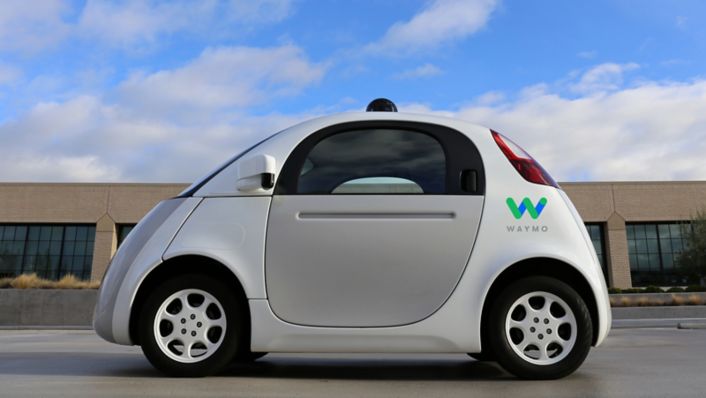
Test drive of Hyundai’s advanced autonomous IONIQ
Having already broken new ground with the IONIQ, now Hyundai has taken its latest step in autonomous driving. The Hyundai IONIQ is already a world’s first - offering a choice of three electrified powertrains in one body type. Now Hyundai has adapted the model even further by demonstrating self-driving technology with an Autonomous IONIQ Concept in Las Vegas.
The test drives in Nevada are part of ongoing trials in urban environments. The IONIQ models use LiDAR technology (a laser and radar-based detection system) to identify the position of surrounding vehicles and objects to navigate a series of test routes. The technology is hidden behind the IONIQ’s front bumper while the system also uses GPS functions and cutting-edge mapping software.

